A man’s wardrobe is built with the basic building blocks of timeless garments. Everything from the right denim to the right shoes will define a man’s style and the image he projects to others. One of the pieces of a man’s fall and winter wardrobe that will define some of his most catching outfits is the sweater.
There are numerous types of sweaters for every occasion. Below is a list of men’s sweaters that every guy should own for a complete wardrobe. Remember that your need for sweaters will depend on where you live. If you live the beach life, sweaters may not be a huge part of your everyday wardrobe, but for most of us, there are at least four months out of the year when these will come in handy.
Pullover sweater
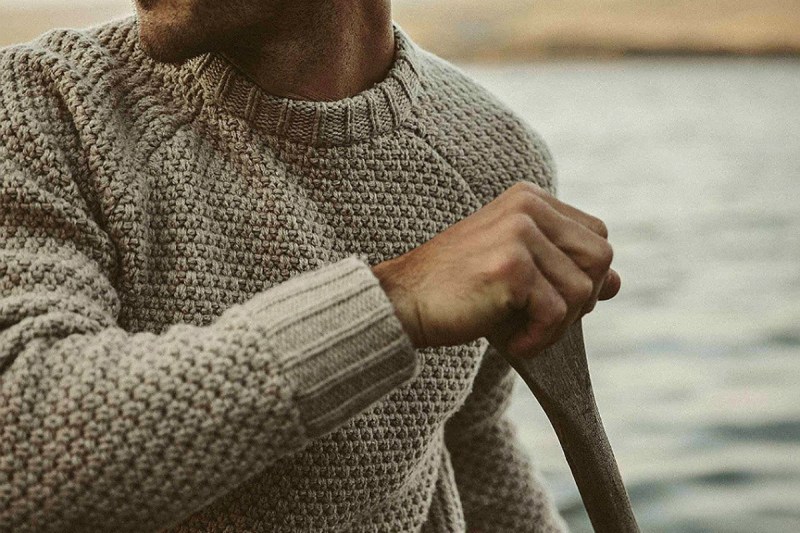
The pullover will be the one worn most often by you and most others. It is the most basic and, therefore, the most common among the sweaters you’ll encounter when shopping. You’ll see three kinds of collar types when choosing the right pullover sweater.
- Crew neck: This is the standard collar that hugs the neck all the way around. It works best on its own and under jackets.
- V-neck: This neck has the basic collar around the back and sides, with the front extending downward and reaching a point a few inches lower.
- Roll collar: This will look very similar to the crew neck, as it encircles the neck normally. The most significant difference is the collar rolls, creating a unique look. It almost appears as though the collar is wrapping a rope.
Shawl collar sweater
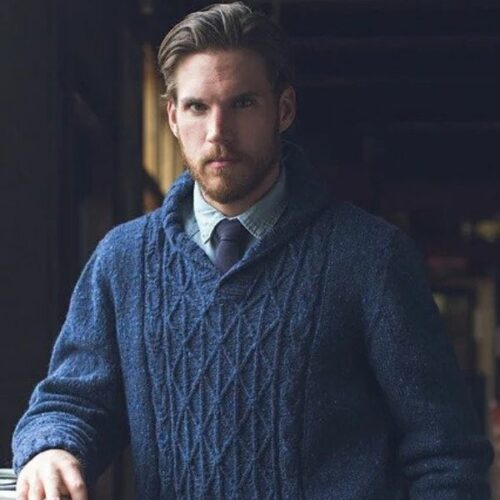
The shawl collar is the ultimate winter or fall sweater. It is a combination of the V-neck and the roll collar. It folds over at the neck to create almost a built-in scarf but opens at the front, creating a perfect opportunity for you to wear an open-collar shirt or a shirt and tie. These don’t usually work well under jackets, but they work as a replacement for a sports coat when you need something a little different to liven up your week.
There are numerous materials these and other sweaters can be made out of. Here are the ones to keep an eye out for.
- Wool: This is the most common material for sweaters and can refer to a variety of animal fibers. The natural material lends itself to function, style, and comfort. Wools are also often long-lasting and high-quality, meaning they will last longer if properly cared for.
- Cashmere: Arguably one of the most luxurious sweater materials out there. Cashmere fibers are a natural wool fiber that comes from the soft undercoat of exotic Central Asian goats. This nomadic breed lives in Asia’s Gobi Desert and Himalayan regions, which explains why its fur keeps you so warm.
- Cotton: While this is not typically used for sweaters, it is excellent for sweatshirts and lightweight sweaters that you can wear for athletic activities and during warmer months.
Cardigan sweater
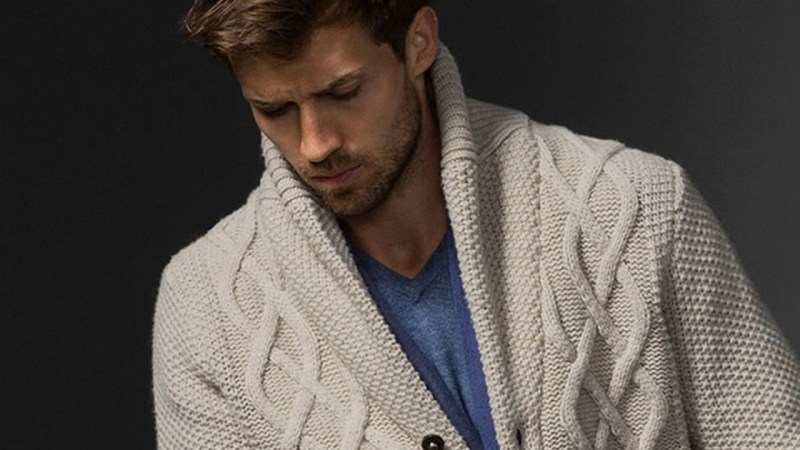
The cardigan is one of the basics every man should have in their closet. With its open front, it lends itself perfectly to help layer. It will look great over a shirt and tie in the office if you happen to work in one of those office buildings that enjoy the arctic temps. And it’s perfect for slipping over a T-shirt or polo on the weekends to add a layer of warmth. They can either be zip fronts or buttons.
When shopping for sweaters, the colors that you choose will go a long way to helping you get the most out of your wardrobe.
- Gray: When you get a light grey sweater, it becomes your staple. This will be the piece you go for more than not because it will go with virtually everything in your closet.
- Black: Black is the most slimming color and, therefore, will keep everything nice and tight if you suffer from too many beers.
- Brown: When you elect a tan or brown sweater, it brings with it a level of sophistication. Many brown sweaters bring an outdoorsy look and feel to an outfit, giving your outfit the aura of the old foxhunt days.
- Blue: Every man loves blue. If you ever walk into a men’s store, look around, and you’ll notice that blue is everywhere. At least one of your sweaters will be blue; you won’t even have to try.
Quarter-zip sweater
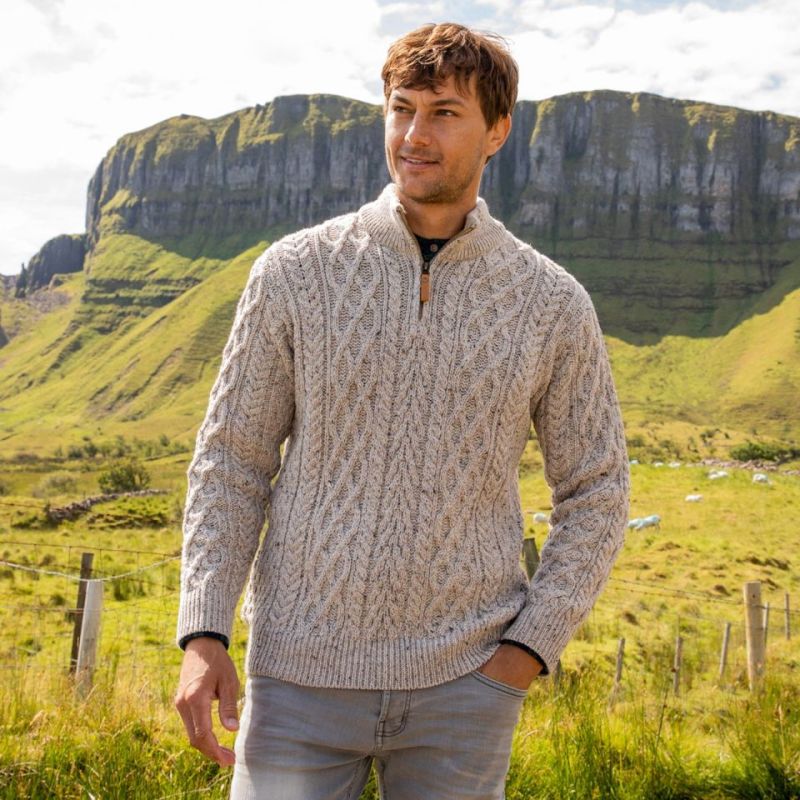
The quarter-zip sweater will be the most casual of all the sweaters in your wardrobe. The zipper comes down to about the mid-sternum when open and can reach as high as under the chin when closed. In its most casual look, it will pair with a T-shirt. A dress shirt and tie can sometimes work underneath it in its most formal form. To avoid trying to be too formal, consider a knit tie and a button-down collared shirt.
When you are first building a sweater wardrobe, you want to avoid too many patterns as they limit versatility. You will often see some common patterns and textures when shopping.
- Cable knit: This pattern typically resembles twisted or braided ropes and ranges in style from relatively simple to more intricate. Due to the thickness of the braids, these are usually much thicker sweaters.
- Ribbed: Ribbing is a pattern in which vertical stripes of stockinette stitch alternate with vertical lines of reverse stockinette stitch. This basically feels more like a pattern than looks like one.
- Argyle: Typically seen as more of a preppy design, the pattern has a square or rectangular box on the front, which showcases an even-length pattern of diagonal checkers.
Mock neck sweater
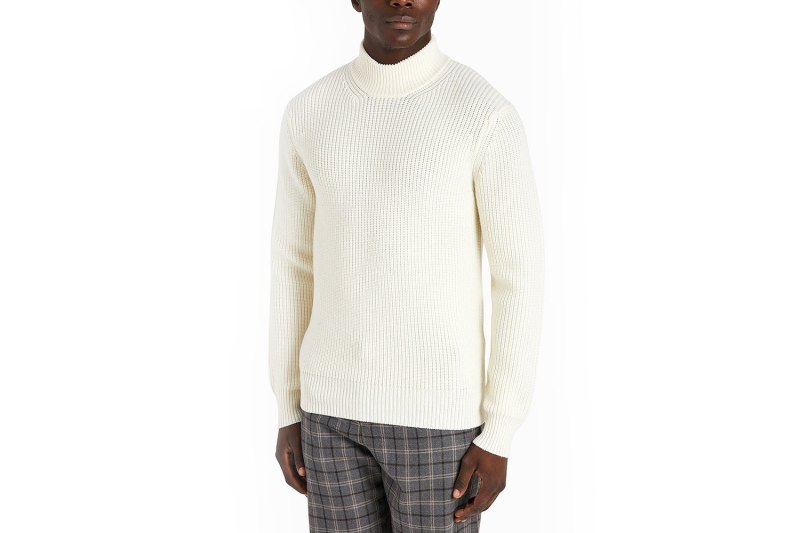
The mock neck sweater is similar to a turtleneck, with a high, close-fitting collar, but there isn’t any extra fabric that you can fold over. These sweaters are a versatile and stylish option for men to don in the fall or winter to keep the neck warm.
When choosing a mock neck sweater for cooler weather, consider the fabric, fit, and style. You should also choose a sweater that’s appropriate for the occasion. Here are some things to consider regarding fabric, fit, and style.
- Fabric: Mock neck sweaters come in a variety of fabrics, including wool, cashmere, cotton, and polyester. Wool is a nice choice for cold weather, as it is warm and insulating. Cashmere is a more luxurious option, but also more expensive. Cotton and polyester are less expensive options, but not quite as warm as wool or cashmere.
- Fit: Mock neck sweaters should fit somewhat tight but not too tight, especially at the neck. You should be able to move around in them comfortably.
- Style: There are many styles of mock neck sweaters. Some styles to choose from include thick knit, ribbed, graphic, and oversized.
Sweater vest

If you find some sweaters too hot, perhaps you should consider a sweater vest. While sweater vests seemed to be going out of fashion some years back, they have been making a comeback in recent years, and for good reason. A sweater vest is perfect to wear under a blazer for work, giving you some extra warmth while still allowing for freedom of movement. And if it gets too warm, you can ditch the jacket and just rock the sweater vest.
Here are some things to consider when thinking about a sweater vest:
- Temperature regulation: You are less likely to overheat in a sweater vest because it allows for greater airflow.
- They go with almost everything: They fit well in both formal and informal situations.
Turtleneck sweater
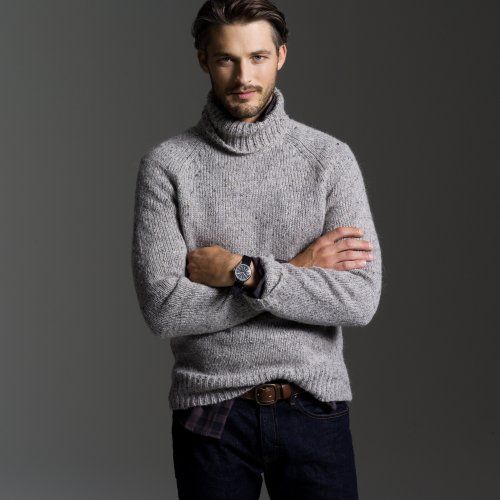
The turtleneck sweater is the most fetching of the types of men’s sweaters. While it feels like it goes in and out of favor among the younger crowds, the truth is a turtleneck is never truly out of style. The thicker sweaters will go in for ultimate warmth, while the thinner versions will work well under sport coats or even button-up shirts. This style will be perfect for men who don’t enjoy the look of scarves but need extra coverage in the colder months.
How your sweater fits will be equally crucial as the type of sweater you choose to buy. Here are some tips for how to ensure your sweater fits you correctly.
- The sweater’s hem should overlap your waistband or fall just under it. The rule of thumb is to try and hide your belt, not your zipper. If you can see your shirt peeking out from underneath it, it’s too short. If your sweater bunches when you sit, it is too long.
- The shoulder seam should sit directly where your arm curves into your shoulder. If you draw an imaginary line from your shoulder to your belly button, the seam should run along it.
- The sleeves should sit at the base of your thumb if worn alone or a 1/2 inch before it if worn with a shirt underneath. Whether you’re planning to wear a shirt under it should be a consideration when shopping for your sweater.
- The body should fit comfortably with a bit of extra material; if it rolls or billows by the hem, it is too large, and likewise, if the seams of your shirt show through, it is too tight.




